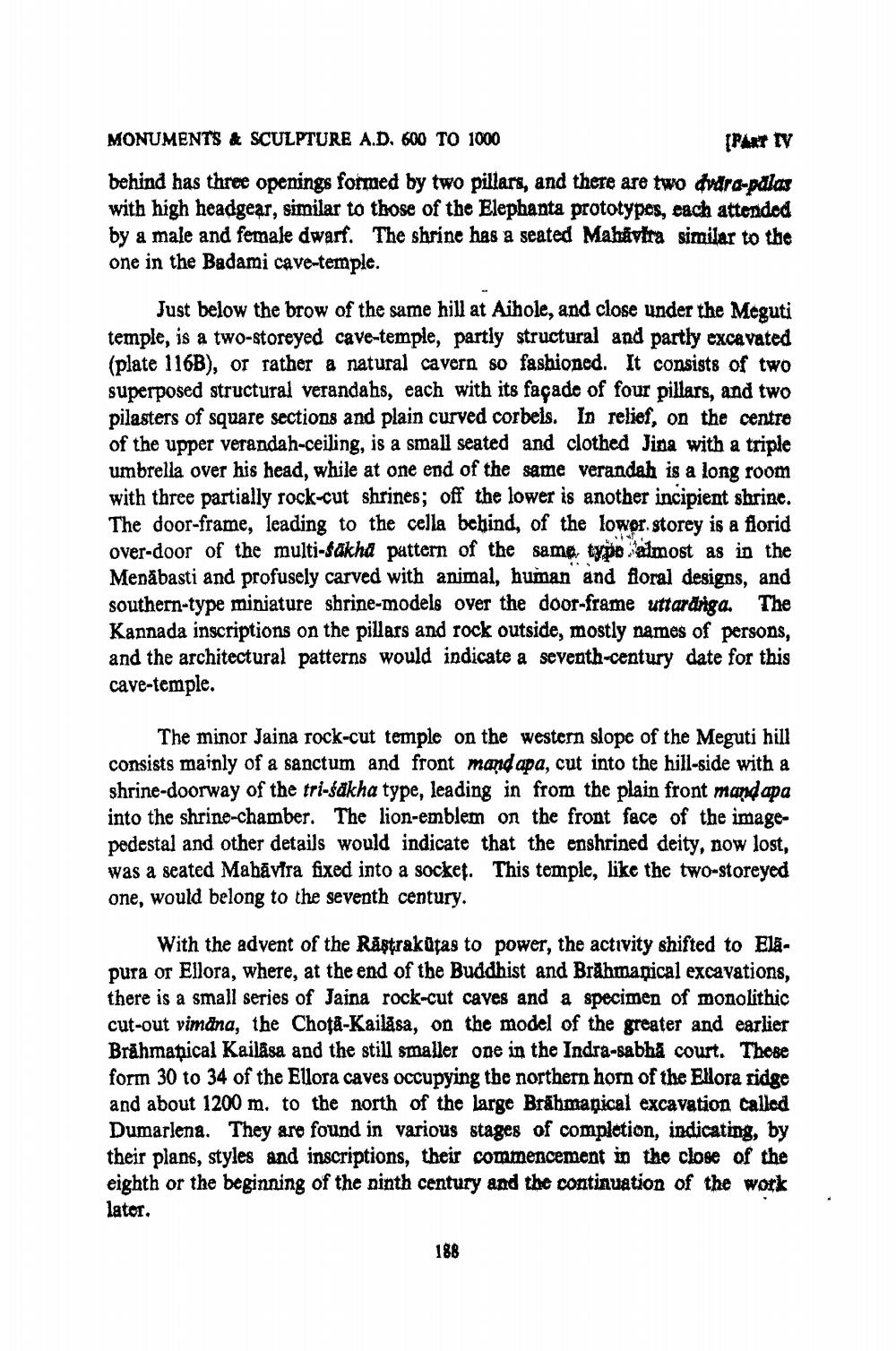________________
MONUMENTS & SCULPTURE A.D. 600 TO 1000
[PART IV behind has three openings formed by two pillars, and there are two dvara-palas with high headgear, similar to those of the Elephanta prototypes, each attended by a male and female dwarf. The shrine has a seated Mahavtra similar to the one in the Badami cave-temple.
Just below the brow of the same hill at Aihole, and close under the Meguti temple, is a two-storeyed cave-temple, partly structural and partly excavated (plate 116B), or rather a natural cavern so fashioned. It consists of two superposed structural verandahs, each with its facade of four pillars, and two pilasters of square sections and plain curved corbels. In relief, on the centre of the upper verandah-ceiling, is a small seated and clothed Jina with a triple umbrella over his head, while at one end of the same verandah is a long room with three partially rock-cut shrines; off the lower is another incipient shrinc. The door-frame, leading to the cella behind, of the lowor.storey is a florid over-door of the multi-Sakha pattern of the same, tyče almost as in the Menäbasti and profusely carved with animal, human and floral designs, and southern-type miniature shrine-models over the door-frame uttararga. The Kannada inscriptions on the pillars and rock outside, mostly names of persons, and the architectural patterns would indicate a seventh-century date for this cave-temple.
The minor Jaina rock-cut temple on the western slope of the Meguti hill consists mainly of a sanctum and front mand apa, cut into the hill-side with a shrine-doorway of the tri-sakha type, leading in from the plain front mandapa into the shrine-chamber. The lion-emblem on the front face of the imagepedestal and other details would indicate that the enshrined deity, now lost, was a seated Mabăvira fixed into a socket. This temple, like the two-storeyed one, would belong to the seventh century.
With the advent of the Råştrakūtas to power, the activity shifted to Elā. pura or Ellora, where, at the end of the Buddhist and Brahmapical excavations, there is a small series of Jaina rock-cut caves and a specimen of monolithic cut-out vimāna, the Chotå-Kailasa, on the model of the greater and earlier Brahmapical Kailäsa and the still smaller one in the Indra-sabhà court. These form 30 to 34 of the Ellora caves occupying the northern horn of the Elora ridge and about 1200 m. to the north of the large Brahmapical excavation called Dumarlena. They are found in various stages of completion, indicating, by their plans, styles and inscriptions, their commencement in the close of the eighth or the beginning of the ninth century and the continuation of the work lator.
188




